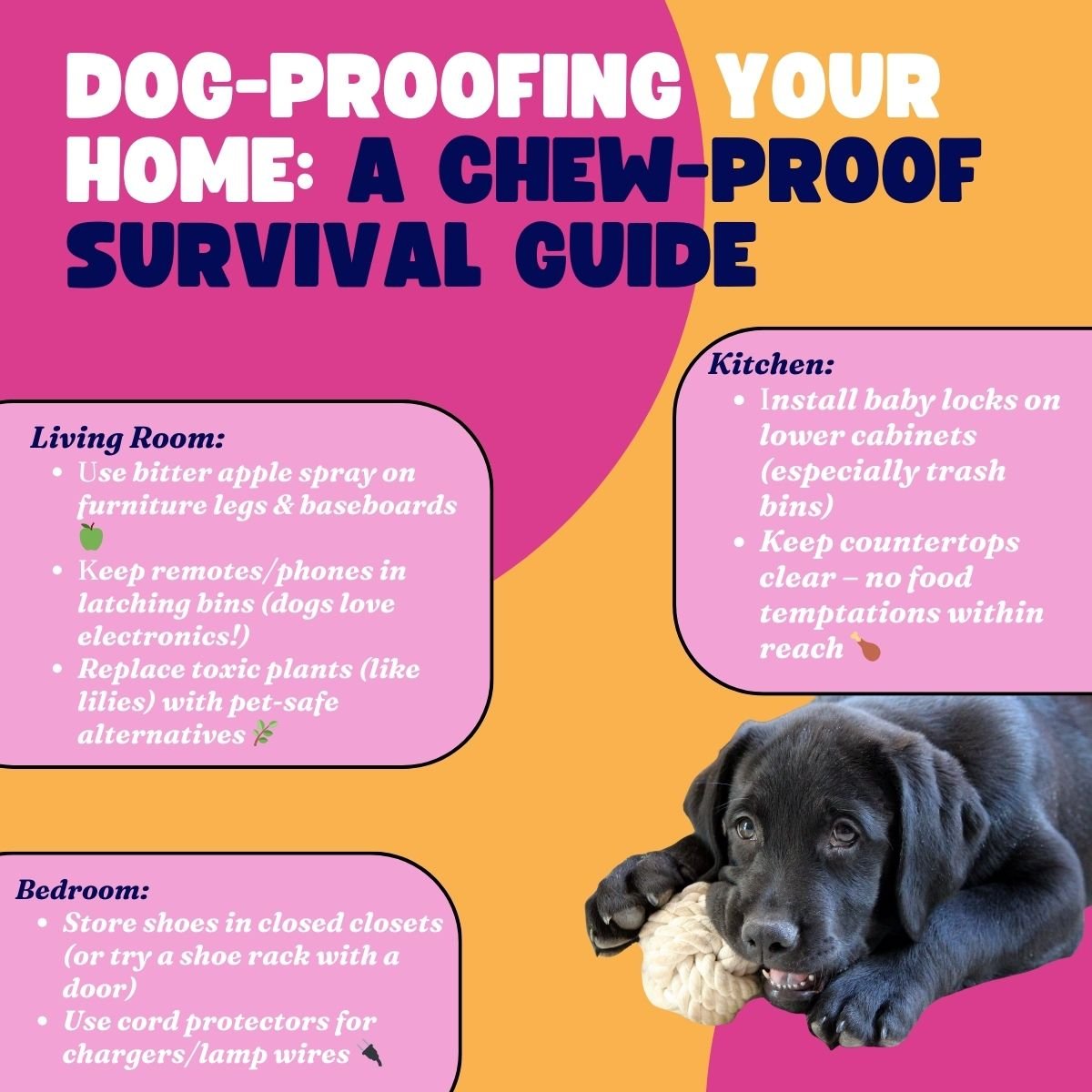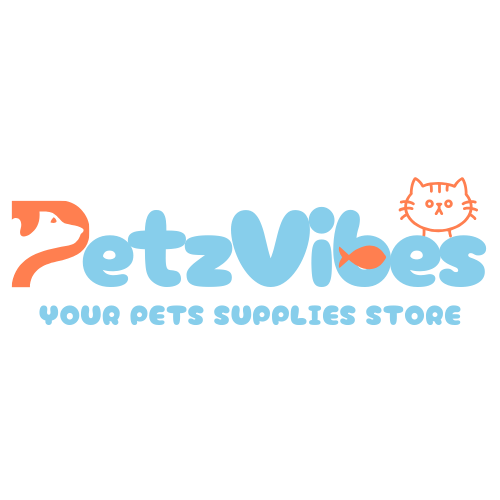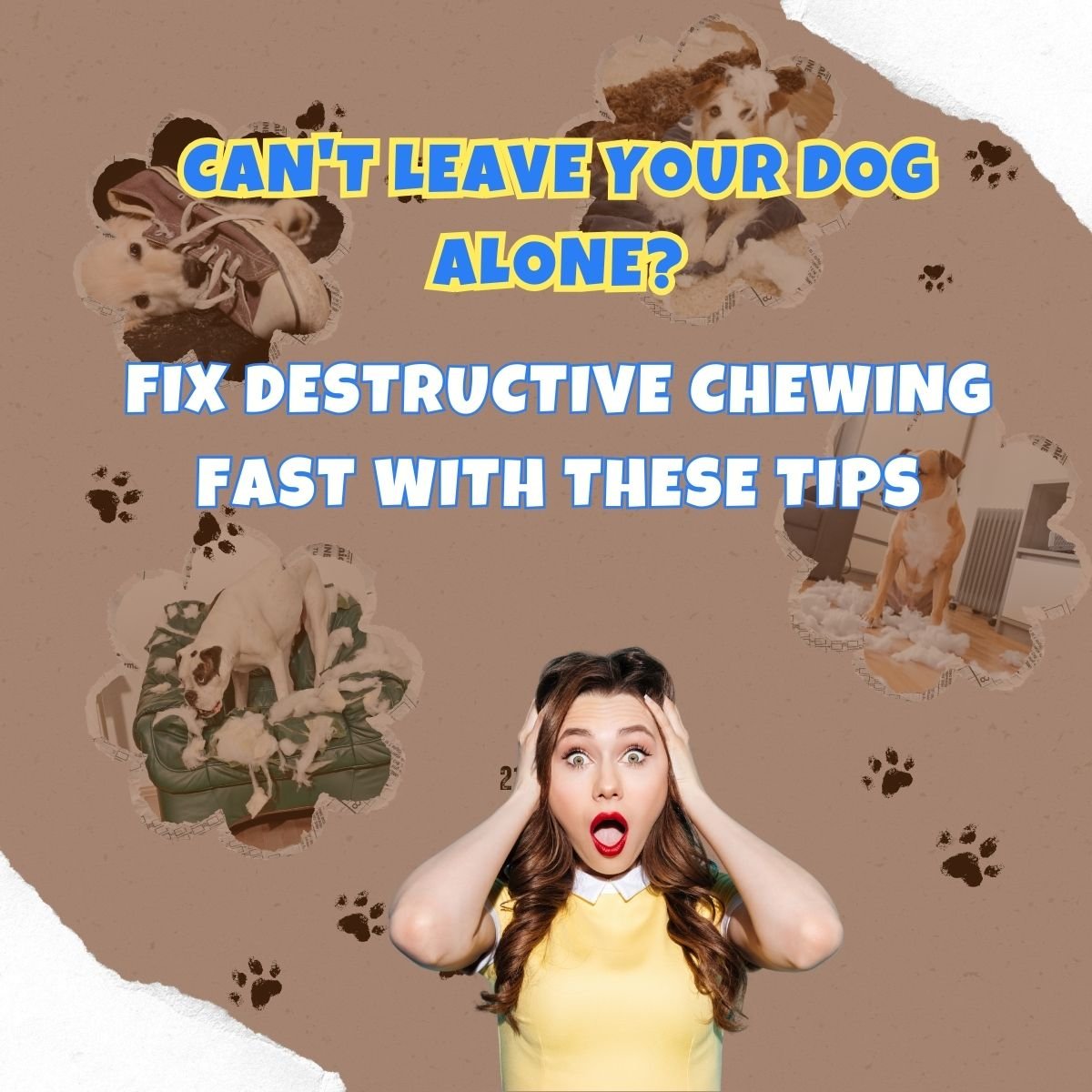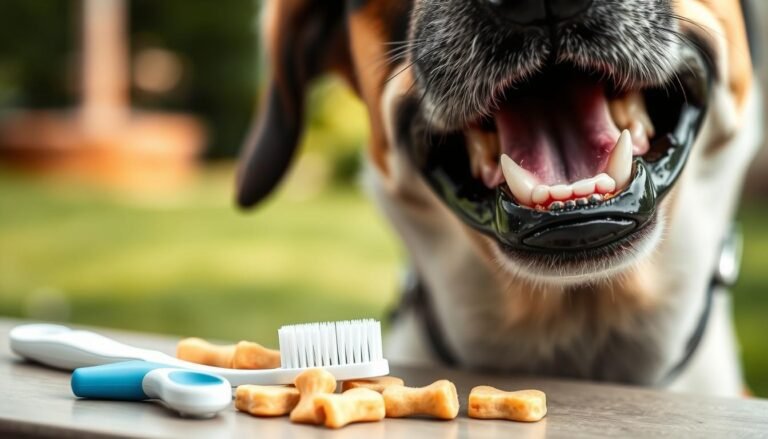Have you ever come home to find your favorite shoes shredded or your furniture gnawed beyond recognition? Destructive chewing behavior is one of the most common—and frustrating—issues dog owners face. Uncontrolled chewing can wreak havoc on your home and sanity, whether you have a teething puppy or an anxious adult dog. But here’s the good news: destructive chewing is manageable with the right approach!
Understanding why dogs chew destructively is the first step to solving the problem. From teething and boredom to anxiety and curiosity, there are many reasons behind this behavior. The key is identifying the root cause and providing safe, healthy alternatives. In this guide, we’ll explore proven strategies to stop destructive chewing, recommend the best chew toys, and help you create a happier, chew-free home for both you and your furry friend.
🔑 Key Takeaways: Stop Destructive Chewing
-
Identify the Cause
-
Puppies: Teething (3-6 months)
-
Adults: Boredom, anxiety, or medical issues
-
-
Prevent & Redirect
-
Puppy-proof + use bitter spray
-
Provide tough chew toys (Kong, Nylabone)
-
Teach “leave it” with rewards
-
-
Fix Underlying Issues
-
More exercise & mental games
-
Frozen treats for teething pups
-
Vet check if sudden/new chewing
-
-
Avoid Mistakes
-
Never punish – it makes it worse
-
Skip rawhides (choking risk)
-
Stay consistent – habits take weeks to change
-
Why Do Dogs Chew Destructively? (Reasons Behind the Behavior)
Destructive chewing behavior isn’t just a bad habit—it’s often a sign of an underlying need. Dogs chew naturally, but when they target your belongings, it’s time to investigate. Here are the most common reasons behind destructive chewing in puppies and adult dogs:
1. Teething in Puppies
Just like human babies, puppies experience discomfort as their adult teeth emerge (usually between 3 and 6 months). Chewing helps relieve sore gums, but without proper guidance, they’ll gnaw on anything—shoes, furniture, or even walls. Providing puppy-safe chew toys can redirect this natural urge.
2. Boredom & Lack of Exercise
A tired dog is a well-behaved dog! When dogs don’t get enough physical or mental stimulation, destructive chewing becomes an outlet for pent-up energy. High-energy breeds (like Labradors or Border Collies) are especially prone to chewing out of boredom.
3. Anxiety & Stress
Separation anxiety, loud noises (thunderstorms, fireworks), or changes in routine can trigger stress-related destructive chewing. Dogs often chew to self-soothe, leaving behind destroyed items when left alone.
4. Exploration & Curiosity
Puppies and young dogs use their mouths to explore the world. If they’re not taught what’s off-limits, they’ll chew anything intriguing—remote controls, pillows, or drywall!
5. Attention-Seeking Behavior
Some dogs learn that chewing gets a reaction, even if it’s negative. If yelling or chasing only happens when they chew your shoes, they may see it as a game.
Pro Tip: Keep a chewing journal (note times, triggers, and items destroyed) to spot patterns in your dog’s destructive chewing behavior.
Signs Your Dog Has a Chewing Problem
Not all chewing is destructive—dogs need to chew for mental and dental health. But how do you know when it’s crossed the line into destructive chewing behavior? Look for these key signs:
1. Destruction of Household Items
-
Shoes, furniture legs, pillows, or electronics with teeth marks or pieces missing.
-
Favorite targets: Items with your scent (like socks or remote controls).
2. Chewing at Specific Times
-
When left alone, → could indicate separation anxiety.
-
At night or during storms → Often linked to stress or fear.
3. Obsessive Chewing (Even on Safe Items)
-
If your dog won’t stop chewing even when given toys, they may be overly anxious or bored.
4. Physical Signs of Stress
-
Pacing, drooling, or whining before chewing.
-
Excessive licking or chewing of paws (a sign of anxiety).
5. Escalating Behavior
-
Starts with soft items (paper, pillows) but moves to complex objects (wood, walls).
What to Do Next?
✔ Puppy-proof the house (more on this later).
✔ Replace banned items with approved chew toys.
✔ Monitor for stress triggers (like loud noises or long absences).
Best Chew Toys for Aggressive Chewers
If your dog destroys toys within minutes, you need indestructible (or nearly indestructible) options. Here are the best chew toys for aggressive chewers, tested by experts and dog owners:
1. Kong Extreme (Best for Power Chewers)
-
Material: Ultra-durable rubber.
-
Why It Works: Stuff with peanut butter or kibble to keep them busy for hours.
-
Best For: Large breeds (like German Shepherds, Pit Bulls).
2. Nylabone DuraChew (Long-Lasting Synthetic Bone)
-
Material: Tough nylon.
-
Why It Works: Flavored options keep dogs interested.
-
Warning: Supervised use only—replace if chunks break off.
3. GoughNuts Indestructible Ring (Virtually Unbreakable)
-
Material: Rubber with a safety indicator (if you see red, replace it).
-
Why It Works: Designed for extreme chewers (even police K9s use these!).
4. Benebone Wishbone (Real Bacon Flavor)
-
Material: Nylon infused with real food scents.
-
Why It Works: The Curved shape helps clean teeth.
5. West Paw Zogoflex Hurley (Eco-Friendly & Tough)
-
Material: Recyclable, FDA-approved rubber.
-
Why It Works: Floats in water—great for fetch + chewing.
Pro Tip: Rotate toys weekly to prevent boredom!
Chew Toys to AVOID for Aggressive Chewers:
❌ Rawhide (can cause choking or blockages).
❌ Cheap plastic toys (splinter easily).
❌ Stuffed animals (unless labeled “for heavy chewers”).
Bonus: Freeze Kong toys with wet food or yogurt for a soothing, long-lasting treat (perfect for teething puppies!).
🐶 Puppy Teething Guide: How to Survive the Chewing Phase
Puppy teething is one of the biggest causes of destructive chewing behavior, but it’s also completely normal! Here’s what to expect and how to help your furry friend through this tough phase.
📅 Puppy Teething Timeline
-
2-4 Weeks Old: Baby teeth start coming in (28 total).
-
3-6 Months Old: Adult teeth push out baby teeth (42 total).
-
6-8 Months Old: Teething usually ends, but chewing habits may linger.
Signs Your Puppy is Teething:
✔ Excessive drooling 🤤
✔ Chewing on everything (furniture, hands, shoes)
✔ Bleeding gums (tiny spots of blood on toys)
✔ Whining or irritability 😫
Best Teething Solutions
-
Cold Chew Toys ❄️
-
Freeze a rubber teething toy (like Kong Puppy) to numb sore gums.
-
Try frozen washcloths (supervise to prevent shredding).
-
-
Puppy-Safe Chew Toys 🦴
-
Nylabone Puppy Keys (soft, textured for gentle chewing).
-
Kong Puppy Toy (stuff with frozen banana or yogurt).
-
-
Avoid Hard Toys ⚠️
-
Ice cubes or hard bones can crack puppy teeth.
-
-
Massage Their Gums ✋
-
Gently rub gums with a clean finger to relieve pain.
-
Pro Tip: Redirect chewing immediately when they target furniture—offer a cold toy instead!
🛑 How to Stop Chewing: Training & Prevention

Stopping destructive chewing behavior requires patience and consistency. Here’s a step-by-step plan:
1. Puppy-Proof Your Home 🏡
-
Keep shoes, cords, and small objects out of reach.
-
Use bitter apple spray on furniture legs.
2. Teach the “Leave It” Command 🐾
-
Hold a treat in a closed hand. Say “Leave it.”
-
When your dog stops sniffing, reward with a different treat.
-
Practice daily until they respond reliably.
3. Use Positive Reinforcement 🎉
-
Praise and treats when they chew their toys.
-
Ignore destructive chewing—no yelling (it can make anxiety worse).
4. Increase Exercise & Mental Stimulation 🏃
-
A tired dog is less likely to chew!
-
Try puzzle toys, sniff games, or longer walks.
5. Crate Training (For Supervised Breaks) 🐕
-
A crate with a safe chew toy prevents destruction when you’re away.
🚨 Avoid Punishment!
-
Never rub their nose in chewed items—it increases stress and doesn’t work.
🍏 Home Remedies to Soothe Chewing Urges
If you want natural, vet-approved ways to ease chewing, try these:
1. Frozen Treats for Teething Puppies ❄️
-
Frozen carrot sticks (great for sore gums).
-
Ice cubes with chicken broth (hydrating + fun to chew).
2. DIY Chew Toys 🧶
-
Knot an old T-shirt (soak in broth & freeze).
-
Empty plastic bottles (remove caps/labels—supervise!).
3. Calming Supplements 🌿
-
CBD oil for dogs (helps anxiety-related chewing).
-
Chamomile tea (cooled and added to water).
4. Bitter Spray Alternatives 🍋
-
Apple cider vinegar + water spray (safe deterrent).
-
Citrus peels near chew zones (dogs hate the smell).
⚠️ Safety Note: Always supervise DIY chews to prevent choking.
🔑 Key Takeaways
-
Puppy teething is temporary—survive it with cold toys & patience.
-
Training + prevention works better than punishment.
-
Home remedies can help, but always prioritize safe chewing options.
🏠 Dog-Proofing Your Home: A Chew-Proof Survival Guide
Destructive chewing can cost you hundreds in repairs – but strategic dog-proofing can save your furniture (and sanity)! Here’s how to puppy-proof like a pro:
🛡️ Room-by-Room Protection
Living Room:
• Use bitter apple spray on furniture legs & baseboards 🍏
• Keep remotes/phones in latching bins (dogs love electronics!)
• Replace toxic plants (like lilies) with pet-safe alternatives 🌿
Kitchen:
• Install baby locks on lower cabinets (especially trash bins)
• Keep countertops clear – no food temptations within reach 🍗
Bedroom:
• Store shoes in closed closets (or try a shoe rack with a door)
• Use cord protectors for chargers/lamp wires 🔌
Outdoor Areas:
• Fence off mulch/fertilizer zones (many are toxic)
• Provide a digging pit (sandbox with buried toys) to save your garden
🔒 Must-Have Dog-Proofing Products
✅ Exercise pen (for safe unsupervised zones)
✅ Heavy-duty toy box (to store approved chews)
✅ Slip-proof rugs (prevent chewing from stress/slipping)
Pro Tip: Do a “puppy eye view” crawl to spot hazards you might miss!
🆘 When to Call a Professional: Beyond DIY Fixes
Most chewing can be managed at home, but these signs mean it’s time for expert help:
🚩 Red Flags
- Destruction continues after 6+ months of consistent training
- Chewing paired with aggression (growling when taking items)
- Self-harm chewing (paws/legs raw from obsessive licking)
👩⚕️ Who to Call?
-
Veterinarian – Rules out pain (dental issues/arthritis)
-
Certified Behaviorist – For anxiety disorders (separation anxiety)
-
Force-Free Trainer – If “leave it” training fails
💡 What to Ask:
• “Do you use positive reinforcement methods?”
• “Can we create a customized chewing plan?”
Cost Saver: Some pet insurers cover behavioral consultations!
❌ Myths vs. Facts: Chewing Edition
Myth 1: “My dog chews to spite me!”
✅ Fact: Dogs lack spite – chewing is instinct or stress, not revenge.
Myth 2: “Only puppies chew destructively.”
✅ Fact: Adult dogs chew due to boredom, anxiety, or medical issues.
Myth 3: “Yelling stops chewing.”
✅ Fact: It increases anxiety, → worsens chewing. Redirect quietly instead!
Myth 4: “Rawhide is the best chew.”
✅ Fact: Many rawhides cause blockages. Try yak cheese or rubber toys instead.
Myth 5: “Crating is cruel for chewers.”
✅ Fact: An appropriately sized crate with toys is a safe den, not punishment.
Visual Mythbuster:
🐶 Myth: Chewing = Bad Dog
🐕 Truth: Chewing = Natural Dog Need (Just Needs Direction!)
📌 Key Takeaways
- Dog-proofing prevents 80% of chewing incidents
- Pros help with the medical/psychological root causes
- Myths lead to failed training – stick to science-backed methods
🌟 Success Stories: Real Dogs Who Overcame Destructive Chewing
Nothing inspires like real-life wins! Here’s how three determined owners solved extreme chewing cases:
Case 1: The Shoe-Shredding German Shepherd
Problem: 1-year-old Loki destroyed four pairs of shoes weekly despite having toys.
Solution:
✔ Scheduled chew time with a GoughNuts ring (indestructible)
✔ 10-minute training sessions teaching “drop it” with high-value treats
✔ Frozen Kongs during the owner’s work hours
Result: Zero shoe losses after 3 months!
Case 2: The Anxious Apartment Chewer
Problem: Bella (a rescue Beagle) gnawed door frames when left alone.
Solution:
✔ Desensitization training (gradual alone-time increases)
✔ Adaptil calming diffuser near chewing hotspots
✔ DIY dig box (rice bin with hidden treats)
Result: After 6 weeks, frame chewing stopped completely!
Case 3: The Teething Tornado Puppy
Problem: 4-month-old Max chewed walls and furniture legs raw.
Solution:
✔ Rotating frozen toys (carrots, wet knotted towels)
✔ Puppy playgroup 3x/week to burn energy
✔ Bitter spray on ONE “test baseboard” (he avoided it!)
Result: Learned to only chew approved items by 7 months old.
📸 Tip: Take before/after photos to track progress – it’s motivating!
🎯 Conclusion: Your Roadmap to a Chew-Free Life with Your Dog
Destructive chewing can feel like an endless battle, but with the right knowledge, tools, and consistency, you can guide your dog toward better habits. Whether you’re dealing with a teething puppy, a bored adolescent, or an anxious adult dog, understanding the root cause is half the solution.
Key Lessons to Remember:
1️⃣ Chewing Is Natural, Destruction Is Not
-
Dogs need to chew—it’s essential for mental stimulation, dental health, and stress relief. The goal isn’t to stop chewing entirely but to redirect it to appropriate items.
2️⃣ Prevention + Training = Success
-
Puppy-proofing and providing high-quality chew toys prevent most problems before they start.
-
Positive reinforcement training (“leave it,” “drop it”) builds long-term good behavior.
3️⃣ Anxiety and Boredom Are Silent Culprits
-
A dog left alone for hours with no stimulation will always find a way to entertain itself—often destructively. Mental enrichment (puzzle toys, sniff walks) is just as important as physical exercise.
4️⃣ Professional Help Is a Strength, Not a Failure
-
If chewing persists despite your best efforts, a vet or behaviorist can uncover hidden issues (pain, compulsive disorders, severe anxiety).
5️⃣ Progress Takes Time
-
Puppies grow out of teething, but adult dogs may need weeks or months of consistent training to break ingrained habits. Patience and celebration of small wins are key!
🚀 Your Next Steps: From Frustration to Freedom
Now that you’re armed with strategies, it’s time to take action! Here’s how to start:
1. Audit Your Dog’s Environment (Today!)
-
Walk through your home and remove temptations (shoes, cords, fragile items).
-
Set up a “yes zone” with approved chew toys.
2. Introduce a New Chew Toy (Within 24 Hours)
-
Try one of the indestructible options (Kong Extreme, GoughNuts) or a frozen treat (carrot, yogurt-filled toy).
3. Start a 5-Minute Training Session (Daily)
-
Practice “leave it” with low-value items (ex: a shoe on the floor) and reward heavily for ignoring it.
4. Track Progress (Weekly)
-
Note improvements in a journal or app. Example:
-
“Week 1: Chewed 1 pillow → Week 3: Only gnawed Nylabone!”
-
❓ FAQ: Quick Answers to Top Chewing Questions
Q: My dog only chews when I’m gone. Why?
A: Classic separation anxiety. Try:
• Leaving worn shirts for comfort
• Camera-checking (Furbo) to see triggers
Q: Are rawhides really that bad?
A: Yes, for aggressive chewers! Safer alternatives:
• Bully sticks (digestible)
• Himalayan yak chews (long-lasting)
Q: How long until training works?
A: Depends on the cause:
• Teething puppies: Usually improves by 8 months
• Adult anxiety chewers: 4-8 weeks with consistency
Q: Should I punish my dog for chewing?
A: Never! Punishment increases stress → more chewing. Redirect + reward instead.
Q: What’s the #1 mistake owners make?
A: Not providing better alternatives – dogs NEED to chew, just on the right things!
🐾 Have another question? Drop it in the comments!
Resources
- ASPCA – Destructive Chewing: https://www.aspca.org/pet-care/dog-care/common-dog-behavior-issues/destructive-chewing
- VCA Animal Hospitals – Dogs and Destructive Chewing: https://vcahospitals.com/know-your-pet/dogs-and-destructive-chewing
- American Kennel Club (AKC) – Puppy Teething Survival Guide: https://akc.org/expert-advice/health/puppy-teething-and-nipping






